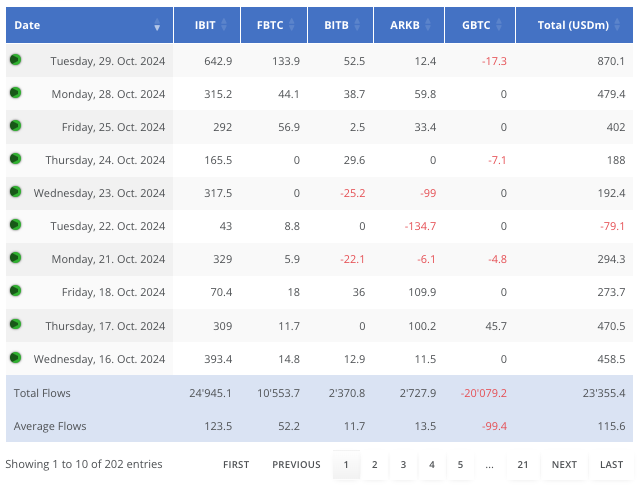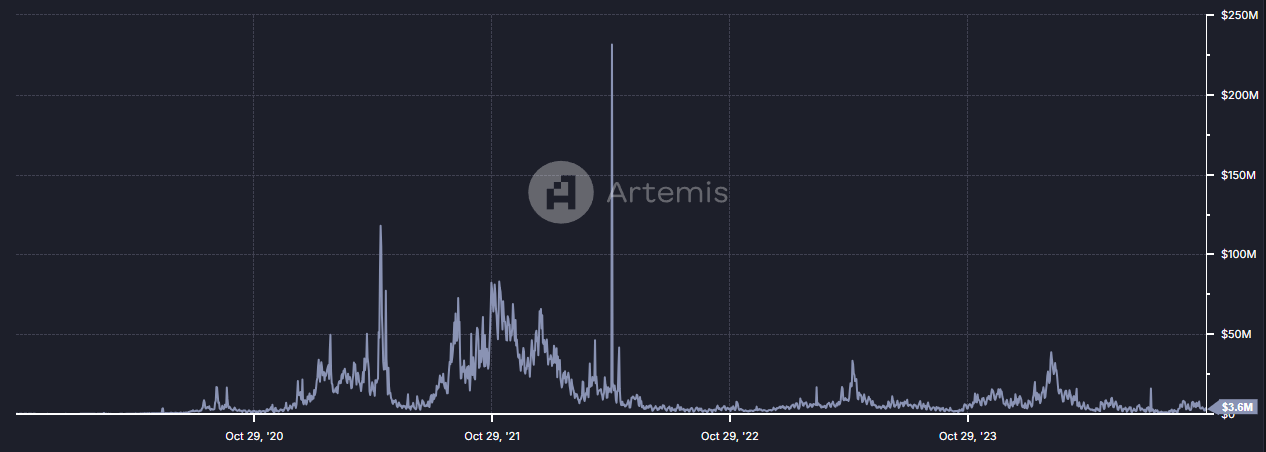Since January 2024, spot-based ETFs for bitcoin have been trading in the USA. Various segments of investors have gained access to this digital asset class for the first time. Asset managers are increasingly taking advantage of this access, as evidenced by the billions of dollars flowing into bitcoin ETFs.
Exchange-Traded Funds (ETFs) are investment funds traded on stock exchanges, similar to individual stocks. They hold a variety of assets, such as stocks, bonds, or commodities, providing investors with an easy way to diversify their portfolios at lower fees. In the case of bitcoin, the ETFs approved in January enabled mainstream investors in the USA to invest in this sector through a regulated, traditional financial instrument for the first time. This allows even more conservative institutions, such as pension funds and endowment funds, to participate.
Bitcoin ETFs: Record Day with Inflows of $870.1 Million
On January 11, 2024, nearly a dozen fund providers received the green light to launch the first spot-based bitcoin ETFs in the United States. Among the issuers are financial giants like BlackRock, Fidelity, and many others. Since the launch, several hundred million dollars have flowed into the products weekly. With bitcoin on the verge of breaking its all-time high, inflows into bitcoin ETFs have surged again. Yesterday, these products surpassed the old record from June 2024 with inflows of $870.1 million.

Over the past five trading days, a total of $2.13 billion in new funds has entered the bitcoin ETFs. With nearly $4.5 billion in net inflows for the entire month, October ranks among the strongest periods for the funds. Since the approval in January, inflows have totaled $23.35 billion. Thanks to the existing funds in the Grayscale bitcoin ETF (GBTC) and the significant increase in bitcoin prices, the ETFs now manage over $70 billion. For comparison, gold ETFs in the USA manage around $129 billion in total.
Breakdown of US Spot bitcoin ETF Flows (in USD million) / Source: CVJ.CH Overview of ETF Flows
No Love for Ethereum ETFs
Despite the strong demand for bitcoin ETFs, investor interest in the Ethereum ETFs approved in July is virtually nonexistent. The launch was disappointing: within a few days, billions flowed out of the Grayscale product, while funds from major players like BlackRock only saw minimal inflows. After the first week, net inflows stood at -$511 million, with no signs of recovery.
Breakdown of US Spot Ethereum ETF Flows (in USD million) / Source: CVJ.CH Overview of ETF Flows
Even amid record inflows into bitcoin ETFs, the numbers for Ethereum ETFs are catastrophic. Compared to the $2.13 billion in inflows to bitcoin products, only $9.2 million flowed out of Ethereum ETFs during the same period. Some days showed no change at all, with volumes in the single-digit millions. The relatively poor performance of Ethereum ETFs is likely due to several factors. On one hand, Ethereum's value proposition is much more complex than the simple "digital gold" narrative of bitcoin. Moreover, Ethereum’s scaling strategy through layer-2 solutions has proven to be a double-edged sword.

As activities shift to various layer-2 blockchains, users require less Ether (ETH) for transactions. Consequently, total fee revenue for Ethereum has sunk to a multi-year low, even though there is significant trading activity in layer-2 networks like Base, Arbitrum, and Optimism.








